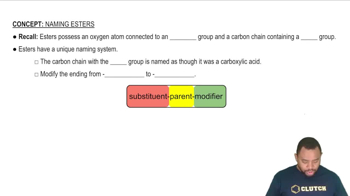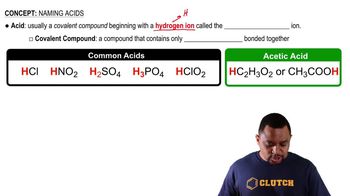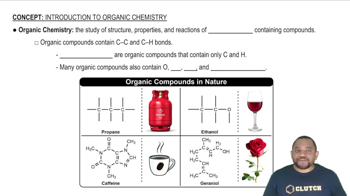Here are the essential concepts you must grasp in order to answer the question correctly.
Ester Formation
Ester formation is a chemical reaction between an alcohol and a carboxylic acid, resulting in the production of an ester and water. In the case of spermaceti, cetyl palmitate is formed from cetyl alcohol (a long-chain alcohol) and palmitic acid (a saturated fatty acid). This reaction is typically catalyzed by an acid and is a key process in organic chemistry for creating various esters used in food, cosmetics, and pharmaceuticals.
Recommended video:
Chemical Structure of Fatty Acids
Fatty acids are carboxylic acids with long hydrocarbon chains, which can be saturated or unsaturated. Palmitic acid, specifically, is a saturated fatty acid with a 16-carbon chain, represented as C16H32O2. Understanding the structure of fatty acids is essential for grasping how they interact with alcohols to form esters, as well as their roles in biological systems and industrial applications.
Recommended video:
Acids and Their Structure
Structural Representation of Organic Compounds
The structural representation of organic compounds, such as spermaceti, involves depicting the arrangement of atoms and the bonds between them. For cetyl palmitate, this includes illustrating the long hydrocarbon chains of both cetyl alcohol and palmitic acid, as well as the ester functional group. Familiarity with drawing and interpreting structural formulas is crucial for understanding the properties and reactivity of organic molecules.
Recommended video:
Introduction to Organic Chemistry
 Verified step by step guidance
Verified step by step guidance

